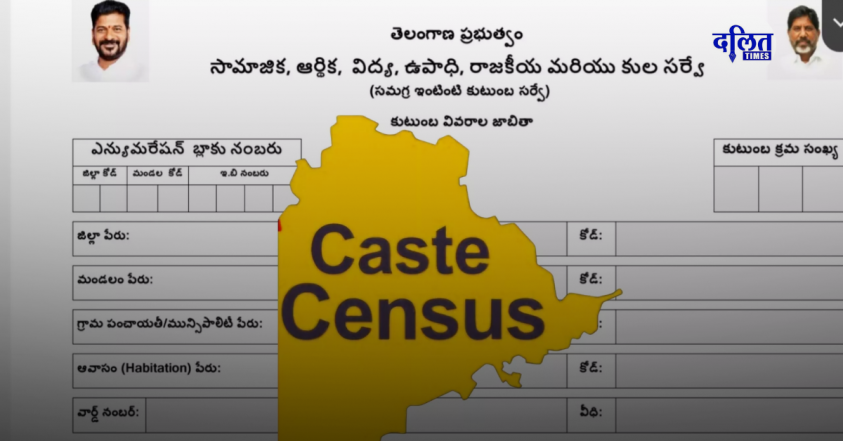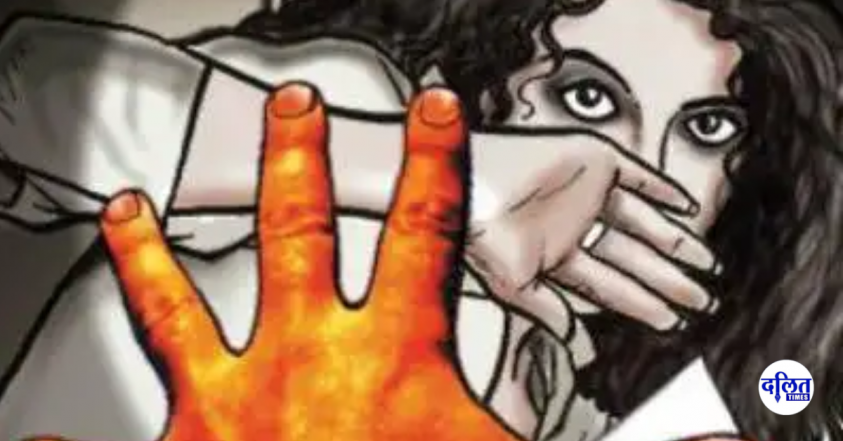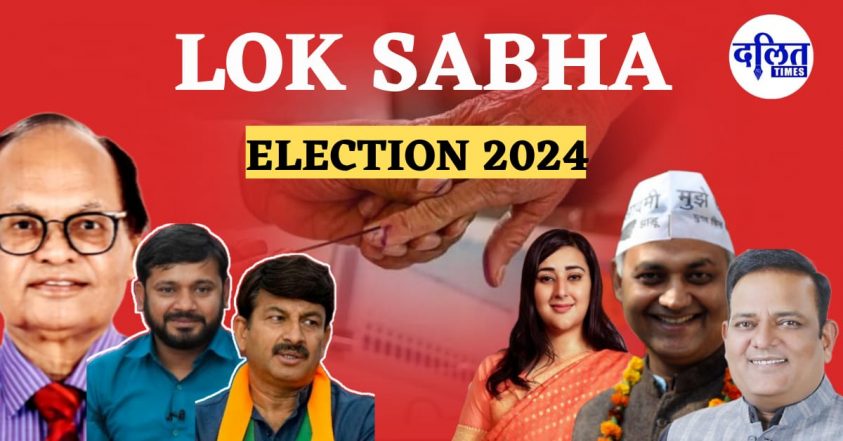Telangana, which emerged as a separate state in 2014 after bifurcating from Andhra Pradesh, has a distinct caste composition. Its population is broadly divided into SCs, STs, Other Backward Classes (OBCs), and forward castes. However, the absence of updated caste data has posed a challenge in formulating targeted welfare policies…
(Bindu Ammini, Advocate, Writer, Dalit Feminist & Legal Advisor of Dalit times)
The first caste survey in India was conducted in 1931, after which caste data was largely omitted from national censuses, except for Scheduled Castes (SCs) and Scheduled Tribes (STs). However, several states, including Bihar (2023), Karnataka, and Andhra Pradesh, have undertaken caste surveys to assess socio-economic and political representation more accurately.
A caste census is not merely a demographic exercise—it is a tool for empowerment, shedding light on the socio-economic, political, educational, and employment status of various communities. In Telangana, caste has historically shaped social, political, and economic structures. Recognizing the necessity of such data, the Telangana Legislative Assembly unanimously passed a resolution urging the central government to conduct a nationwide caste census.
Historical Background of Caste Data in Telangana
Telangana, which emerged as a separate state in 2014 after bifurcating from Andhra Pradesh, has a distinct caste composition. Its population is broadly divided into SCs, STs, Other Backward Classes (OBCs), and forward castes. However, the absence of updated caste data has posed a challenge in formulating targeted welfare policies.
The 2011 Census recorded Telangana’s population at 3.50 crore, while recent caste survey reports estimate it to be around 3.54 crore. The last significant caste study in the region dates back to the Kapu Commission (1968) and the Socio-Economic Caste Census (SECC) 2011. However, these reports were either incomplete or never made public in detail, fueling the demand for a fresh and comprehensive caste census.
Telangana’s Push for a Caste Census
Growing demands from various political and social groups emphasize the need for a caste-based survey in Telangana. The primary objectives of such a census include:
- Understanding the demographic distribution of different castes.
- Improving reservation policies to reflect population proportions.
- Enhancing socio-economic welfare programs for marginalized communities.
- Ensuring fair political representation for disadvantaged groups.
Expected Caste Composition in Telangana (Estimates)
Although official caste census data is unavailable, estimates suggest the following approximate distribution of communities in Telangana:
- OBCs: ~46.25%
- SCs: ~17.43%
- STs: ~10.48%
- Forward Castes (Upper Castes): ~13.31%
Dominant Communities in Telangana
- Forward communities
Reddys and Velamas are the majority belongs to Forward community and their socio-political-economic condition is far better than all others.

Both Reddys and Velamas dominate Telangana’s political landscape, holding key positions across major political parties. Their influence extends from legislative assemblies to administrative structures.
- Reddys: A historically landowning caste with vast agricultural wealth, Reddys have transitioned into business, real estate, and industries. A study revealed that six out of Hyderabad’s top ten billionaires belong to the Reddy community, reflecting their economic dominance.
- Velamas: Traditionally engaged in agriculture, Velamas have diversified into business, trade, and education. The most notable leader from this community is K. Chandrashekar Rao (KCR), founder of the Bharat Rashtra Samithi (BRS) and Telangana’s first Chief Minister.
- Scheduled Castes
Majority belongs to Mala and Madiga Communities
The Mala and Madiga communities form the largest SC groups in Telangana, historically engaged in agricultural labor and caste-based occupations. Despite affirmative action policies, economic disparities persist, especially in rural areas.
- Mala Community: Many have transitioned into government jobs and education, benefiting from reservations.
- Madiga Community: Historically involved in leatherwork, the Madiga Reservation Porata Samithi (MRPS) has been advocating for SC sub-categorization, arguing that reservation benefits are unequally distributed.
All other scheduled castes socio-economic-political conditions very pathetic and only through reservation their social condition become little bit changed.
Both Malas and Madigas have become politically active, with parties like BRS, Congress, BJP, and BSP seeking their electoral support. However, the demand for sub-categorization remains a contentious issue, influencing elections and government policies.
Scheduled Tribes
Lambadas and Gonds are the major communities under scheduled Tribes
- Lambadas (Banjaras): Traditionally nomadic traders, many have now settled into agriculture, business, and government jobs. However, tensions have risen as other ST groups, particularly Gonds, argue that Lambadas have unfairly benefitted from ST reservations.
- Gonds: Predominantly residing in Adilabad, Komaram Bheem, and Nirmal districts, Gonds face economic hardships due to land alienation, deforestation, and lack of access to irrigation.
- Lambadas: Hold significant political clout, with representation in legislative bodies and district administrations.
- Gonds: Have been vocal in demanding the delisting of Lambadas from the ST category, citing inequitable distribution of tribal reservations.
Other Back Ward Communities
Munnuru Kapus, Yadavs, Mudiraj, and Gouds
Munnuru Kapus
- A subgroup of the Kapu community, mainly engaged in agriculture, trade, and government services.
- Many have transitioned into business, real estate, and IT sectors, especially in Hyderabad, Warangal, and Karimnagar.
- Strong political presence in BRS and BJP.
Yadav Community
- Traditionally involved in cattle rearing and dairy farming, Yadavs dominate Telangana’s dairy industry.
- Increased participation in politics, police, and government services through OBC reservations.
Mudiraj Community
- Traditionally engaged in fishing and agriculture, many have migrated to urban employment, construction work, and small-scale businesses.
- Political representation in BRS, Congress, and BJP, but demands for greater power within the OBC category persist.
Goud Community
- Historically involved in toddy tapping and liquor trade, many Gouds have transitioned into business, retail, and government jobs.
- Strong influence in BRS and Congress, particularly in excise and trade sectors.
Political and Social Implications of a Caste Census
A caste census in Telangana could significantly impact:
- Reservation Policies: Adjustments in quotas for OBCs, SCs, and STs based on actual population data.
- Electoral Strategies: Political parties tailoring campaigns to caste demographics.
- Welfare Programs: Targeted economic and social development schemes for marginalized communities.
Challenges in Conducting a Caste Census
Despite its potential benefits, a caste census faces several hurdles:
- Political Sensitivities: Demand for increased reservations may lead to unrest.
- Data Accuracy: Ensuring correct representation is a complex task requiring scientific methodologies.
- Opposition from Forward Castes: Resistance from upper castes fearing redistribution of resources.
- Methodological Concerns: Previous caste surveys have faced allegations of bias and political influence.
A caste census in Telangana could be a transformative step, offering crucial insights into socio-economic inequalities, political representation, and resource allocation. However, allegations of inaccuracy, unscientific methodologies, and political manipulation in previous caste surveys pose a challenge. The true test lies not just in conducting the census but in ensuring its data is used fairly and effectively to uplift marginalized communities.
The coming years will determine whether Telangana takes decisive steps toward an inclusive, data-driven social justice framework or whether caste-based inequalities persist due to political and administrative inertia.



